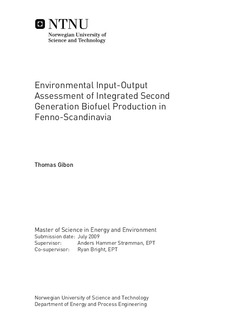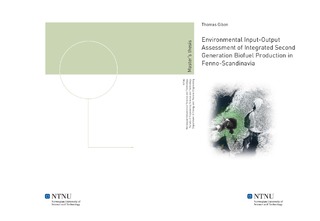| dc.description.abstract | The goal of this study is to investigate the potential implementation of integrated dimethyl ether (DME) production from by-products of the pulp and paper industry in Fenno-Scandinavia (Finland, Norway and Sweden) and to quantify the consequences of several use scenarios in which fossil fuels were gradually substituted by DME. To that end, two analytical frameworks were jointly used, life cycle assessment (LCA) and environmentally-extended input-output analysis (EEIOA). The first framework was utilised to make an exhaustive inventory of the Chemrec process and its integration in the Finnish, Norwegian and Swedish contexts. The latter framework was employed in order to incorporate this production system into a multi-regional input-output model that has been created for the purpose of the study. For data availability reasons, the stressors that have been examined are anthropogenic carbon dioxide, methane and dinitrogen monoxide, widely regarded as the elements which are responsible for the most serious environmental impacts. Three different story lines (plus a baseline scenario) were taken into account: a resource assessment scenario, in which a total implementation is assumed; a policy-independent approach setting a constant increase in the use of biofuels and a policy-compliance approach, aiming at satisfying European directive goals. It results that 5.21 to 20.6 Mt of DME can be produced, while the range of greenhouse gases emissions that can be saved thanks to a black liquor-based DME production scheme goes from 46.7 (scenario 3) to 70.5 (scenario 2) Mt in 2050, that is, 8.15 12.8% out of the otherwise total emissions in Fenno-Scandinavia. This LCA/IO analysis emphasises that the amount of greenhouse gases emissions embodied in every kg of DME highly depends on each country's background economy and evolves considerably along the decade, unit-level analysis show drastic reductions (-15% to -57% between 2000 and 2050) in DME embodied emissions. A nationwide analysis highlights a very important potential from the Finnish pulp and paper industry. All in all, it shows that such a biofuel production scheme should be implemented in countries that have an remarkable environmental profile to obtain very significant environmental performances. Only a joint effort of all the key sectors (energy, transportation, households) can lead to climate change mitigation and energy security. | nb_NO |

